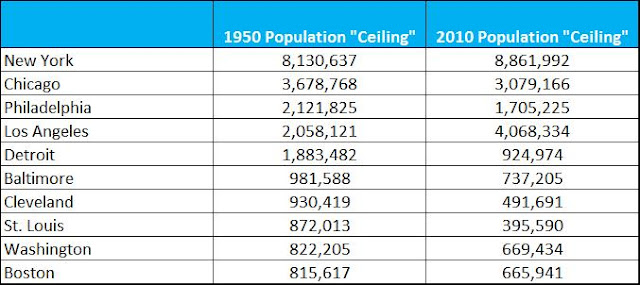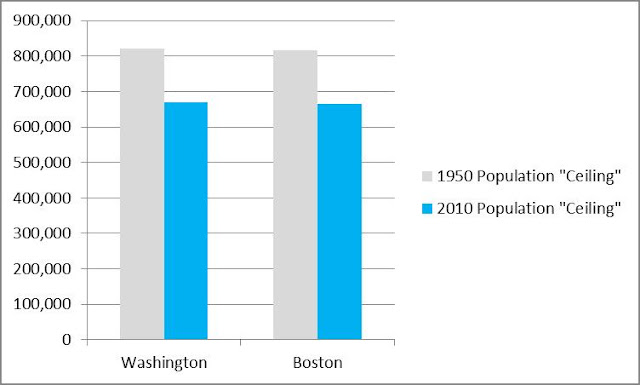Recently I published a piece on my Forbes site that discusses the disparate impact that demographic and social shifts had on larger, older U.S. cities over the second half of the 20th century. Basically, the smaller American household size, generated by later marriages, rising divorce rates, lower fertility rates and rising life expectancy, among other things, has meant that unless cities were adding housing, they simply weren't growing. Yeah, I know I'm quoting myself, but here's a sample:
"Most people intuitively understand the economic underpinnings of urban decline, and the economic advantages that have led to their rebound. The loss of manufacturing destroyed the economic base; the spread of globalization and the new economy has created new opportunity in cities. But far less well understood are the far-reaching cultural and social changes that impacted the demographic makeup of cities — and would have caused population loss, even without economic restructuring."
I encourage you to check it out.
I go on to suggest that population loss was inevitable for the most of the largest cities of mid-century America, and point out that today's cities may never reach their previous population peaks. I put together a cool table that demonstrates this:

However, in putting this piece together I left quite a bit on the table, both in terms of graphics and additional content. So consider this an addendum to the Forbes piece.
First, I think it's stunning to see a visual that illustrates the differences in a 1950 and 2010 population ceiling for the ten cities examined. Check these out, shown two cities at a time:





I think it is absolutely stunning to see that cities like Cleveland, Detroit and St. Louis could at best (at least right now) attain maybe half of their population in 1950. And a case could be made that smaller household size may be the most significant factor in their decline.
Three points I was unable to expand on in the Forbes piece. First, now that the pendulum is swinging back in favor of cities, their influence is ascending faster than their population growth. Cities are leading discussions now the economy, on infrastructure, on energy, on housing. For the latter third of the 20th century the suburbs led that discussion. But today, cities have reclaimed that role. Their actual size, in terms of population, matters less today than it did 60 years ago.
Second, the American preference for new over old has nearly as much to do with this shift as shrinking household size. For nearly 50 years the suburbs (and by extension, the Sun Belt) was new, and that was a main feature of their attraction. But there's also that saying, "everything old is new again." Cities are the new thing, and while they're not everyone's cup of tea, they are doing better than at any time in the last 50 years.
Third, it's conceivable that many suburbs and/or Sun Belt cities may find themselves impacted by emerging demographic or social shifts. Having a huge inventory of single family homes in a world that is asking for multifamily options? A strong auto-oriented landscape when more people are looking for walkable environments?
I'm not suggesting that all older cities are ascendant, and the suburbs and Sun Belt are doomed. But staying ahead of trends may be the lesson all need to heed.
Top photo: Vacant homes in Philadelphia, awaiting their revitalization. Source: smartgrowthamerica.org



















